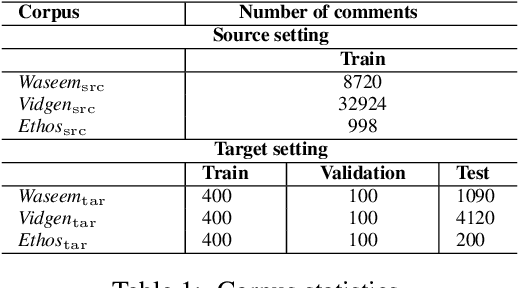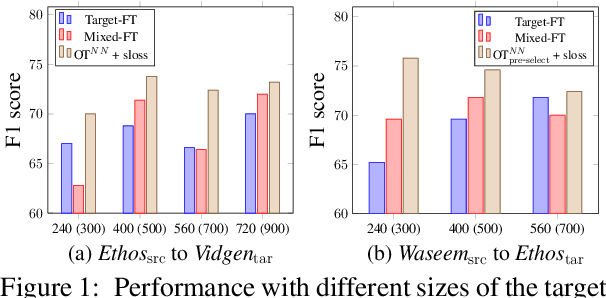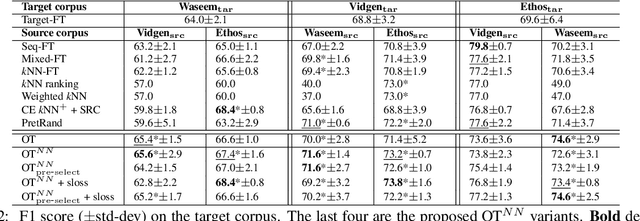Transferring Knowledge via Neighborhood-Aware Optimal Transport for Low-Resource Hate Speech Detection
Paper and Code
Oct 17, 2022



The concerning rise of hateful content on online platforms has increased the attention towards automatic hate speech detection, commonly formulated as a supervised classification task. State-of-the-art deep learning-based approaches usually require a substantial amount of labeled resources for training. However, annotating hate speech resources is expensive, time-consuming, and often harmful to the annotators. This creates a pressing need to transfer knowledge from the existing labeled resources to low-resource hate speech corpora with the goal of improving system performance. For this, neighborhood-based frameworks have been shown to be effective. However, they have limited flexibility. In our paper, we propose a novel training strategy that allows flexible modeling of the relative proximity of neighbors retrieved from a resource-rich corpus to learn the amount of transfer. In particular, we incorporate neighborhood information with Optimal Transport, which permits exploiting the geometry of the data embedding space. By aligning the joint embedding and label distributions of neighbors, we demonstrate substantial improvements over strong baselines, in low-resource scenarios, on different publicly available hate speech corpora.
 Add to Chrome
Add to Chrome Add to Firefox
Add to Firefox Add to Edge
Add to Edge